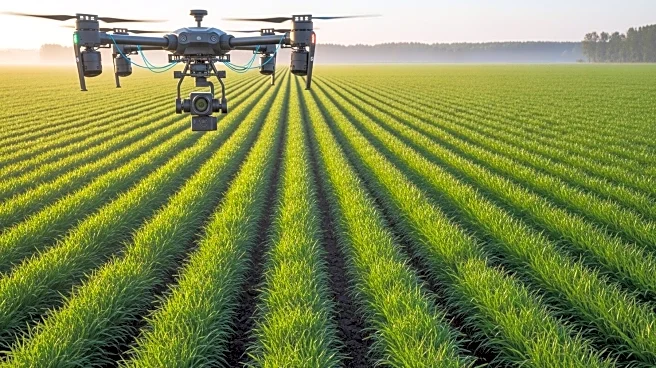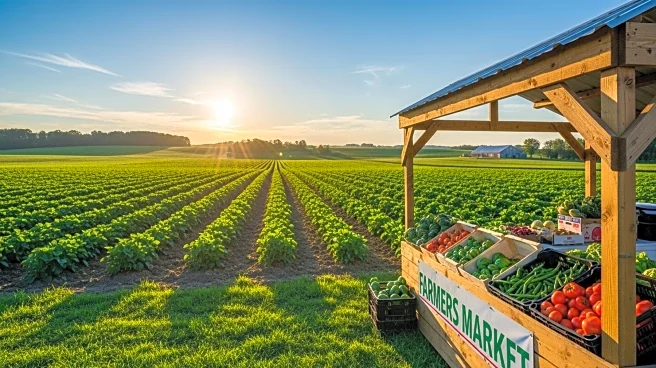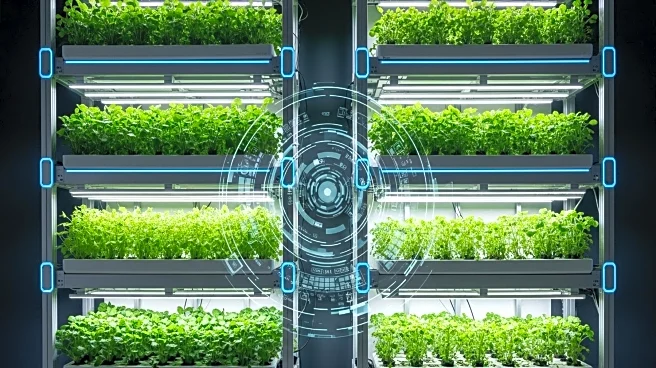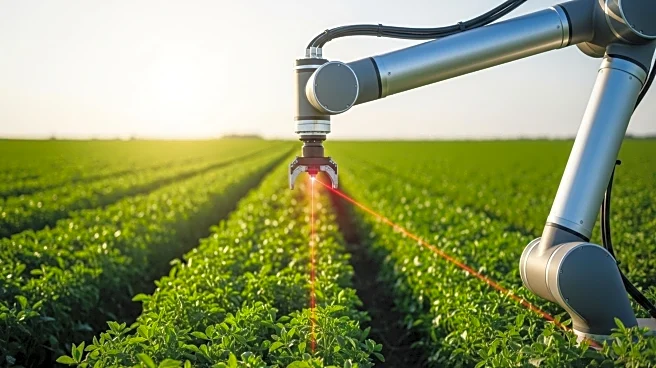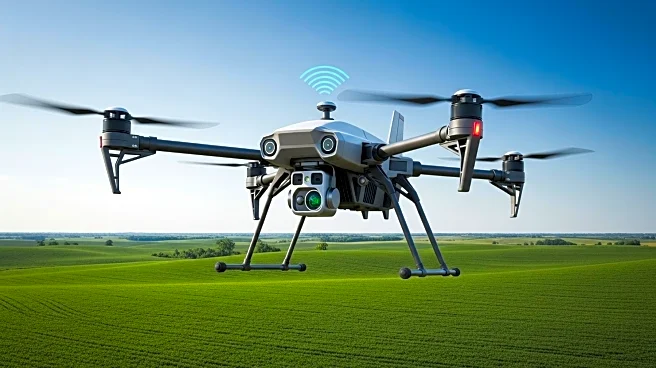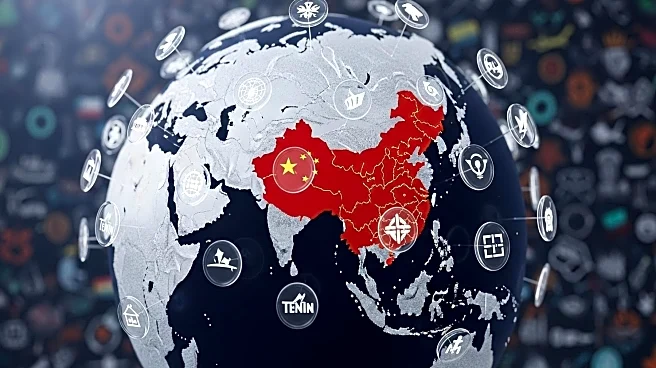What's Happening?
The precision agriculture market is experiencing significant growth, projected to expand from USD 7 billion in 2022 to USD 18 billion by 2031. This growth is driven by the integration of advanced technologies such as GPS, GIS, drones, sensors, and data analytics, which are transforming modern farming practices. These technologies enable farmers to optimize productivity, improve efficiency, and adopt sustainable agricultural practices. Variable Rate Application (VRA) is a key technology driving this growth, allowing precise management of fertilizers, pesticides, and water. Major companies like Deere & Company and Hexagon AB are leading innovations in this field, enhancing precision equipment and developing digital tools for agriculture.
Why It's Important?
The expansion of the precision agriculture market is crucial for addressing global food security challenges while promoting environmental sustainability. By leveraging data-driven insights, farmers can make informed decisions that increase yields and reduce resource wastage. This technological shift supports sustainable farming practices, which are essential in the face of rising global food demand and environmental pressures. The adoption of precision agriculture technologies also has significant economic implications, potentially reducing operational costs and increasing farm profitability. As these technologies become more accessible, they offer a pathway for both large and small-scale farmers to enhance productivity and sustainability.
What's Next?
The precision agriculture market is expected to continue its growth trajectory, with further advancements in AI and IoT technologies. Governments and industry stakeholders are likely to increase investments in research and development to support the adoption of these technologies. In the U.S., initiatives by the National Institute of Food and Agriculture are promoting the use of geospatial and sensor technologies, which could further drive domestic adoption. Globally, regions like Europe and Asia-Pacific are also focusing on sustainable agricultural policies and technological integration, which will likely contribute to the market's expansion.
Beyond the Headlines
The rise of precision agriculture highlights broader shifts towards data-driven and sustainable farming practices. This trend reflects a growing recognition of the need to balance agricultural productivity with environmental stewardship. As precision technologies become more widespread, they could lead to significant changes in agricultural labor dynamics, with increased demand for skilled workers capable of managing and interpreting complex data systems. Additionally, the emphasis on sustainability may drive further regulatory changes and consumer expectations around environmentally friendly farming practices.

